Gardens with a special focus increase student interest. Specialty gardens may attract birds or butterflies. Or they may:
-
- Focus on a specific time in history (e.g., Medieval times, Colonial America, or the Victory Gardens of World War II.)
- Integrate with social studies units and include plants from a specific region such as Mesopotamia or from the Mediterranean Climate zones.
- Emphasize ethnic foods from different countries.
- Showcase a storybook (e.g., Peter Rabbit or Little House on the Prairie) or other literature such as a Shakespearean garden with plants mentioned in his works or grown during the seventeenth century.
- Be artistic designs (e.g., color wheels, flag designs, geometric layouts, etc.).
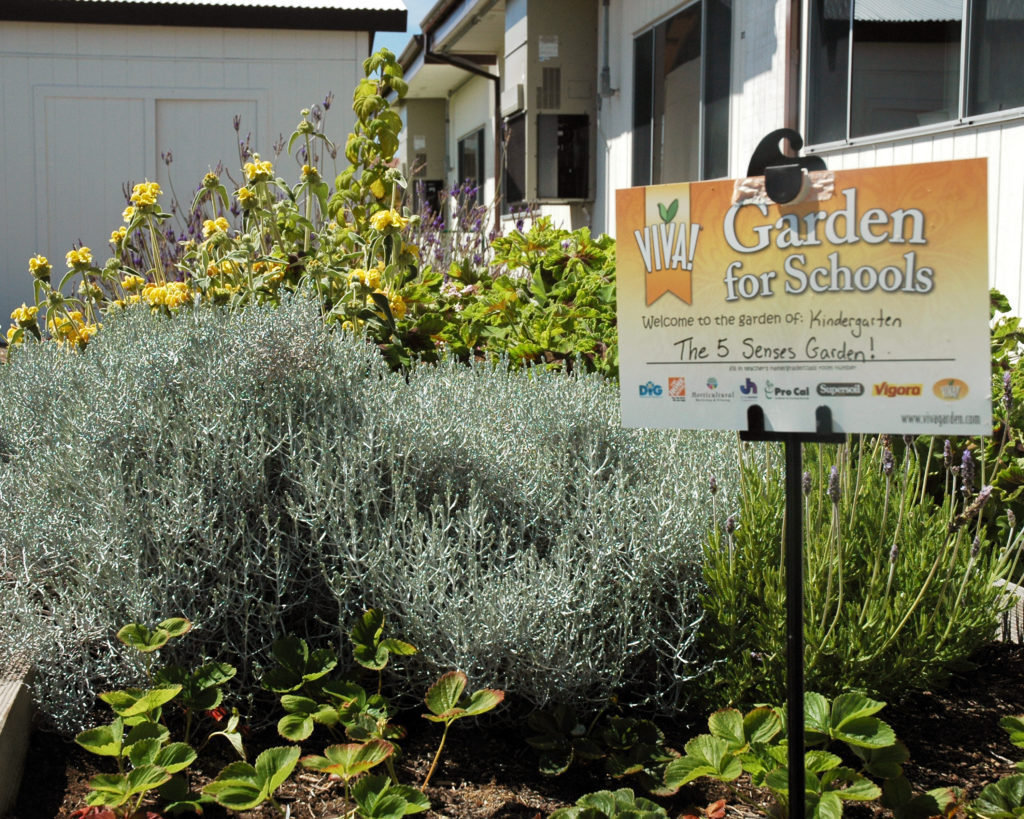
Native Plant Gardens
For centuries, plants provided Native Americans with food, medicine, dyes, basketry, tools, construction materials, and materials for rituals. A garden of native plants is easily integrated with history, art, creative writing, cuisine, conservation, and experimentation. Many native plants attract certain birds and butterflies therefore, they may provide gardens areas for wildlife study on the school grounds.
Some Native Americans used a system of companion planting known as the 3 Sisters Gardens which combines Indian corn (maize), pole beans and winter squash or pumpkins. Indian corn provided a tall structure for pole beans to grow on. The beans enriched the soil with nitrogen and the winter squash or pumpkins provided a living mulch that shaded the soil and helped prevent weed growth. This is just one example of plants that can benefit each other when planted together.
The drought-tolerant character of the chaparral and coastal sage plants make them popular in school gardens. Once established, they do not require much care or irrigation. Because of their extensive root systems, they do better in landscape plantings where their roots can grow and develop naturally rather than in the confines of a raised bed. Some schools use selected varieties in landscaped beds around the school property and parking lot dividers. Once planted, each specific variety should have a permanent weather resistant marker for easy identification by students.
Members of the San Diego Chapter of the California Native Plant Society San Diego may be able to provide advice, planting instructions and assistance in the selection of varieties for the school’s native plant garden. A helpful reference is Southern California Native Plants for School Gardens by Betsey Landis.
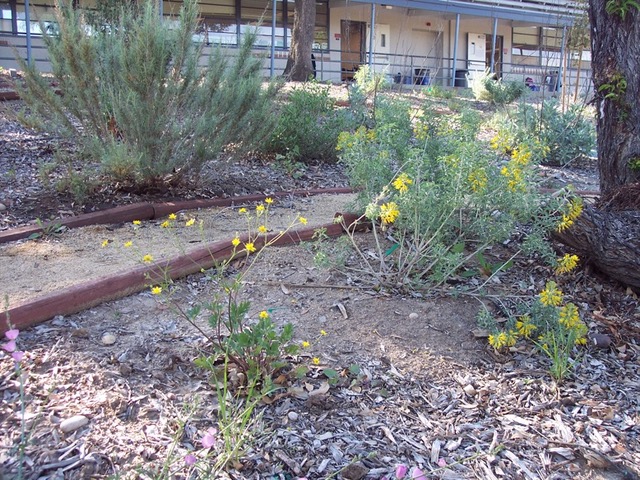
Square Foot Gardens
Square foot gardens take advantage of limited space and enable students to plant something of their own choosing. Students might select different colored low-growing annuals, or vegetables. Lay out an area and divide it with string into one-foot square sections. For detailed information, go to Square Foot Garden Designs, Tips, and Plans.
Herb Gardens
Herb gardens are very popular in schools. You can grow an assortment of culinary and fragrant herbs, or you may decide to devote space to compare many varieties of one herb, such as basil. Once established, herbs require very little maintenance other than watering and weeding. Almost all herbs grow in the San Diego area and most can be started with transplants, cuttings or seeds. Many seed companies have special assortments of herb seeds. Perennial herb plants will last for many years. A large container such as a half-barrel makes an ideal herb garden. A word of caution – some mints are very invasive and can take over an entire garden. They spread by underground runners and need to be planted in a container with a saucer or other barrier between the roots and the garden soil.
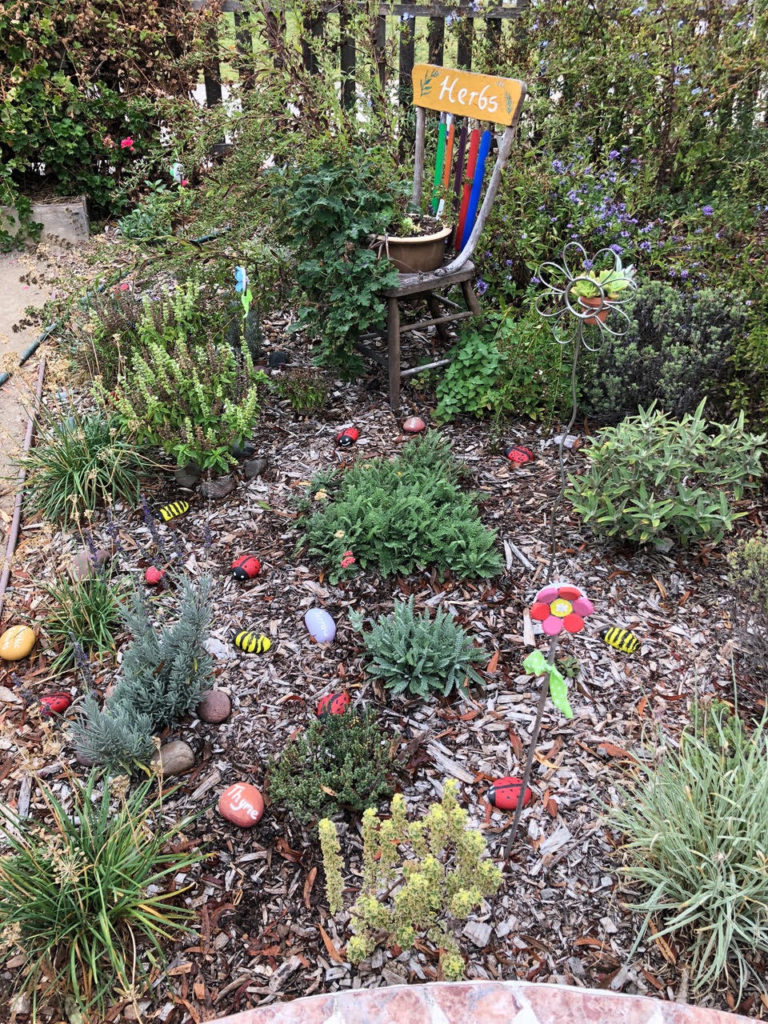
Pizza Gardens
Most children love pizza! Why not have a small section of the garden for plants that are part of a pizza recipe: tomatoes, oregano, basil and peppers. These warm season crops can be planted from mid-spring to early summer. You might want to create a round bed and divide it into six or more pie shaped “slices”. Plant each “slice” with a different pizza ingredient. Use several different kinds of tomato and pepper plants to make more slices and add variety. Outline the borders of the “slices” with border plants such as dwarf marigold.
Succulent Gardens
A succulent is any plant that stores water in its leaves, stems or roots to withstand drought conditions. Most succulents come from desert or semi-desert areas. This makes the San Diego area an ideal place to have a special garden for succulent plants. There are a many varieties of succulents. Most are easy to grow and require very little attention once established. They may be planted in decorative containers and used as accent plants at various locations around the school. Students can easily propagate succulents from cuttings and sell them at plant sales as a means of raising funds to support the garden. Oddly shaped succulents often attract curious students and can be combined in a Dr. Seuss garden. NOTE: Be careful to research any possible harmful effects before selecting succulents. Spines can be dangerous and some succulents have sap that can be caustic to skin and eyes (e.g., Sticks on Fire).
Gardens to Attract Birds
Birds provide an extra layer of animation to the garden and enhance its beauty. They reward us with color, song, and provide bird watching entertainment. With protective cover from predators, suitable food and water, the resident birds in the area will consume many insect pests. The distribution of some species of birds will vary from neighborhood to neighborhood. Birds select their individual territories and may be reluctant to seek or be attracted to other sites. Attracting birds to your garden may require patience. For more information go to the Master Gardener list of Plants That Attract Pollinators.
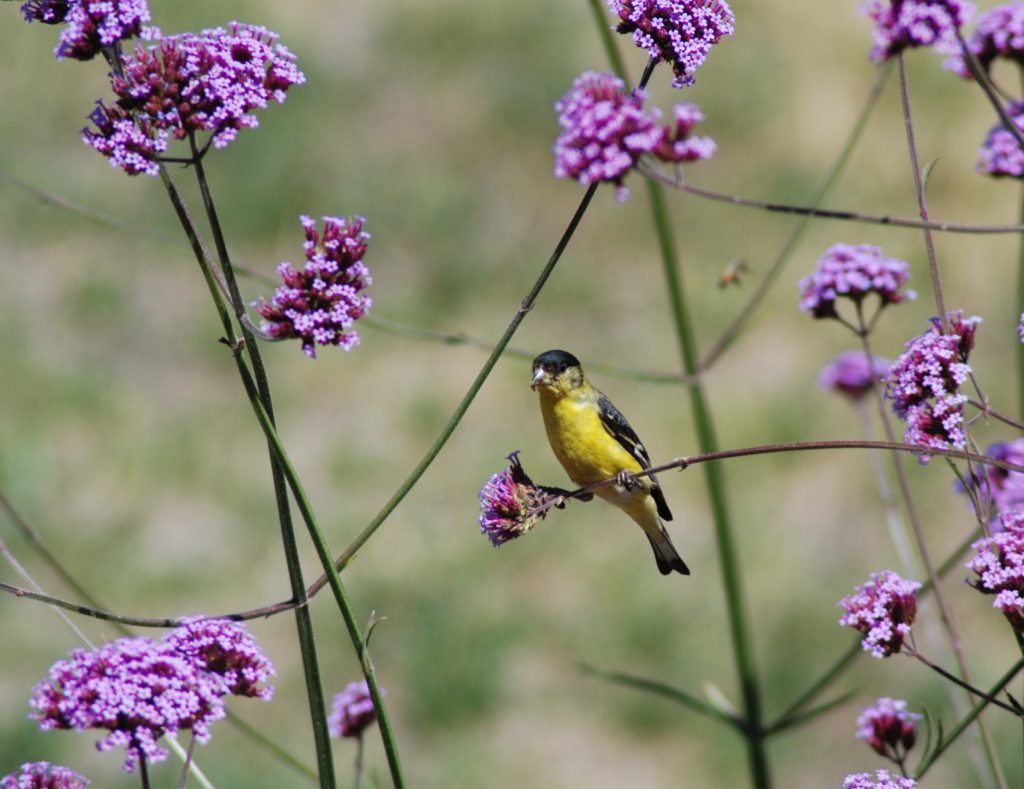
Common Birds of San Diego County and Their Food Preferences
-
-
- Hummingbird — Nectar, Insects
- House Finch — Weed seeds
- House Sparrow — Insects, Weed seeds
- Mourning Dove — Seeds
- Brown Towhee — Seeds, Insects
- Mockingbird — Insects, Fruit
- Scrub Jay — Nuts, Fruits, Insects
- Robin — Earthworms, Insects, Fruit
- Bushtit — Insects
- Black Phoebe — Insects
- Hooded Oriole — Insects, Fruit
-
Provide Protective Cover
A safe environment is most important for birds’ survival. Plants for cover can include various kinds of trees and shrubs. Choose varieties that will also provide for secluded nesting, roosting and food. Fruit trees, shrubs, vines with seeds or berries, and plants that attract insects will determine the species of birds attracted to your garden.
Provide Food
Learn the feeding habits of the birds you wish to attract. Most birds are not specific as to the type of food they eat. Eating habits may vary from summer to winter. Summer insect eaters are likely to eat weed seeds in the winter. Even seed-eaters and hummingbirds catch insects to feed their nestlings. Fruit trees, shrubs, vines with seeds or berries, and plants that attract insects will determine the species of birds attracted to your garden.
Plants that attract insects or produce fruit, seeds or nectar include mulberry (not fruitless), pomegranates, berry vines, lantana, sunflower, honeysuckle, and grasses. The California Native Plant Society can provide a list of natives that attract birds.
Whether to use bird feeders is a personal decision for each school gardener to make. Bird feeders may attract ‘nuisance birds’ such as starlings and pigeons that are not welcome. To provide a safe and healthy feeder, keep both it and the surrounding area clean. Naturalists think that having plants that attract hummingbirds is superior to supplying them with sugar water in feeders. Deep throated flowers such as fuchsias, salvias, penstemons, cape honeysuckle and bottlebush will bring hummers to your garden.
NOTE: If you supplement the nectar hummingbirds obtain from flowers, it is important to take steps to insure their health. Dissolve one part white sugar (sucrose) in four parts warm water. If it is to be kept, this solution should be boiled first and then it may be refrigerated for several weeks if necessary. Using other sweeteners including honey, larger proportions of sugar, or red food coloring could cause harm to birds. To avoid contamination with harmful disease organisms, the feeders need to be changed about every three days and cleaned before refilling.
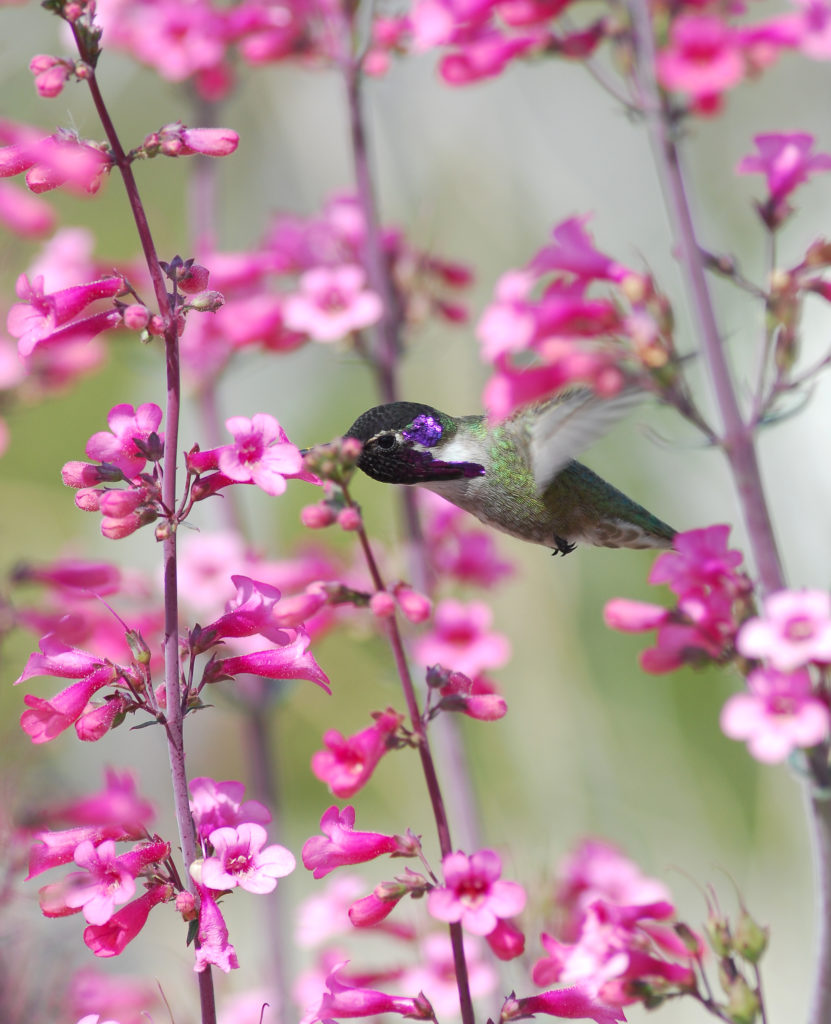
Provide Water
A birdbath will be a popular daily gathering place for birds to drink and bathe. Make sure it is near protective cover for birds, but not where cats may hide and pounce upon them. A simple, shallow container, 18 to 24 inches in diameter and 2 inches deep on a pedestal 2 to 3 feet high is best. Plastic, ceramic, or concrete containers are suitable, but avoid metal as the water could become too hot. Keep the birdbath clean and supplied with fresh water. Use Mosquito Dunks® tablets to kill mosquito larvae without harming pets or wildlife.
Gardens to Attract Butterflies
Butterflies, along with hummingbirds, bees, and wasps are important pollinators. They visit gardens where they can find nectar-producing flowers. By supplying the special needs for both the adult butterfly (nectar plants) and for the larval or caterpillar stage (host plants) you can provide exciting hands-on natural science experiences. The students will have opportunities to observe the fascinating four stages of the butterfly’s life cycle: egg, larva (caterpillar), pupa (chrysalis), and adult.
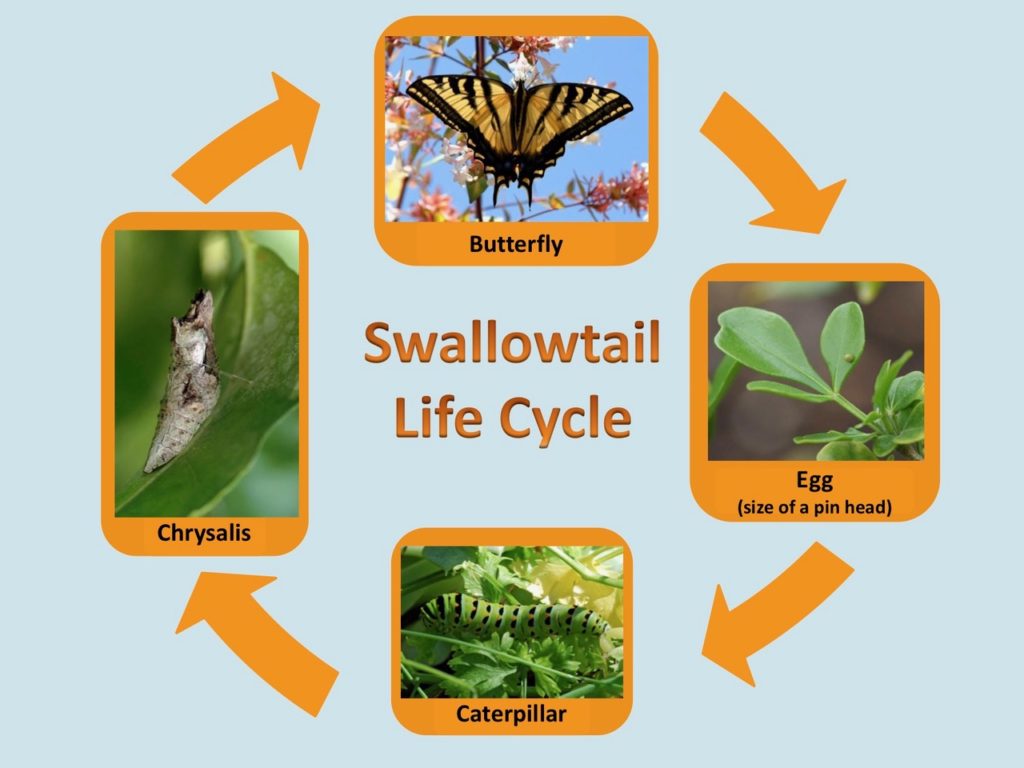
The butterfly season in Southern California is normally February to November, but it can be affected by weather conditions. Some species can be seen year-round. Most are active on sunny, windless days when the temperature is between 65 and 95 degrees Fahrenheit.
To set up a butterfly friendly garden:
-
- Plant butterfly friendly plants – nectar plants for adult butterflies and host plants for the caterpillar stage.
- Provide water, sunny locations and rocks for them to rest upon.
- Encourage beneficial insects to minimize problem insects.
- If needed, lightly prune your garden plants. Butterflies like a natural looking garden.
Feeding Butterflies
Butterflies seem to prefer yellow, orange, lavender and white flowers. Common nectar plants that provide food for butterflies include Milkweed (Asclepias species), Butterfly Bush, Coreopsis, Pride of Madeira, Escallonia, Hebe, Lantana, Lavender, Purple Coneflower, Salvia, Verbena, and Zinnia. Native plants attract many species of butterflies. List of Plants that Attract Pollinators
You can plant nectar and host plants in the same area with vegetables. Very few butterfly caterpillars cause significant damage to plants in the garden. One that can be a pest on vegetables in the cabbage family is the little green Cabbage Looper. Students can watch for them and pick them off, or simply observe their behavior and enjoy them.
Caterpillars of many butterflies and some moths (e.g., woolly bears) often leave host plants to pupate in brush or woodpiles. Birds also feed on the insects and spiders living there. Leaf litter, weeds and piles of brush support birds and butterflies and contribute to their survival. NOTE: Woodpiles are not appropriate in school gardens as they may attract Black Widow Spiders.
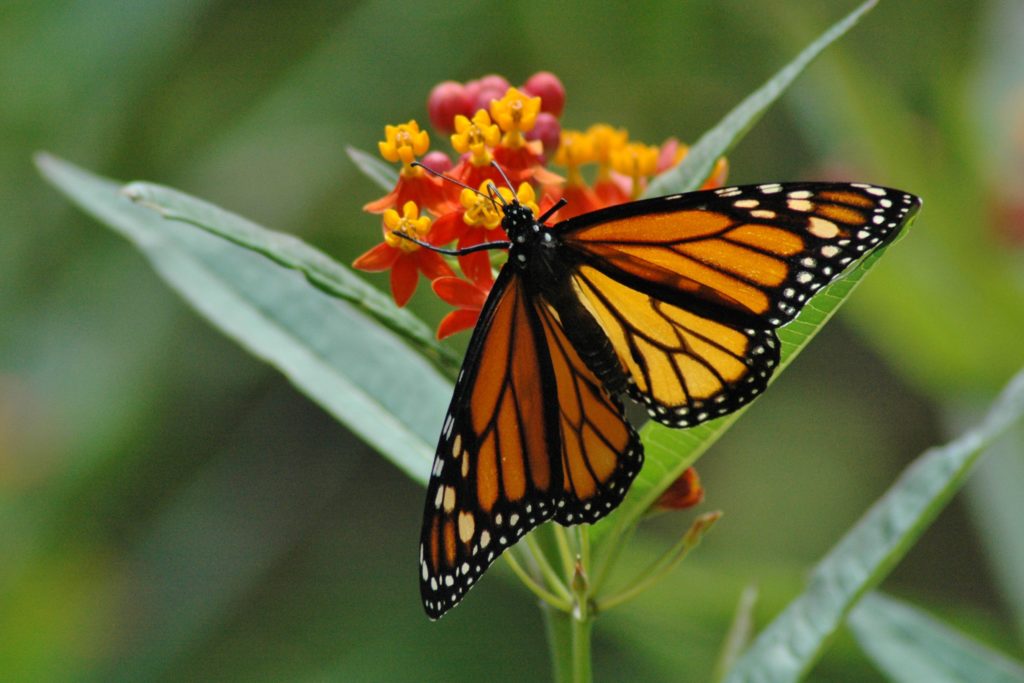
Feeding Caterpillars
While most adult butterflies feed on nectar from a variety of flowers, caterpillars have different requirements. Some species of caterpillars will munch happily on leaves of several different plants; some will accept only one family of plants; and others will feed on only one genus or species. Host Plants for Common Butterflies
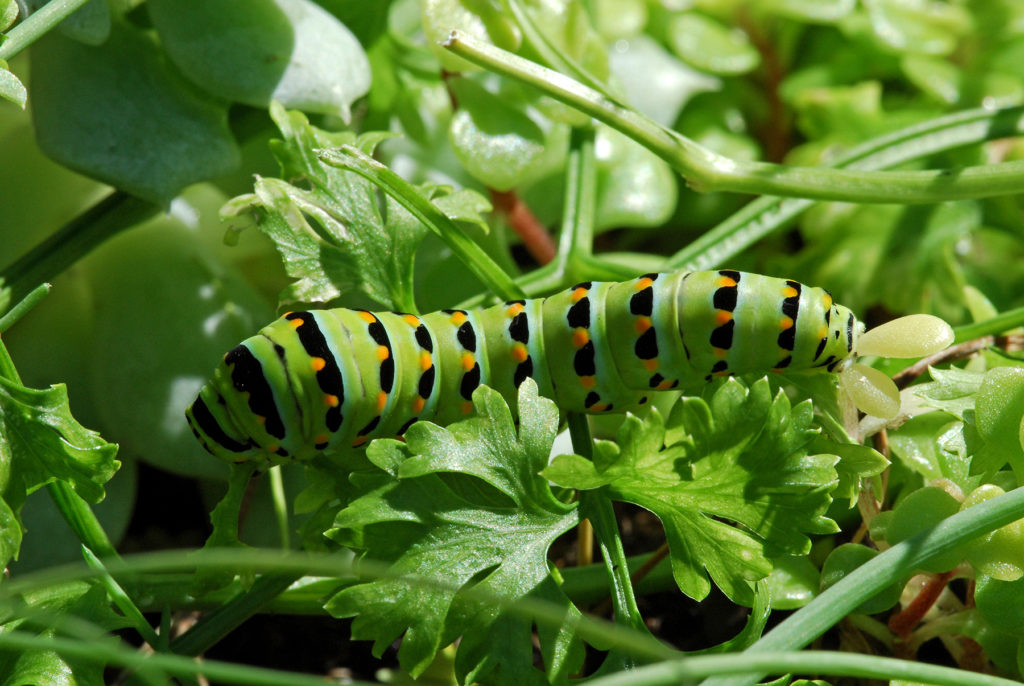
For many of us, birds, butterflies, and other animals that inhabit our gardens and yards represent one of our few remaining links with the natural world. Encourage, protect, and ENJOY them!
Butterfly Resources
Tips for Attracting Butterflies to Your Yard
“The Children’s Butterfly Site”
Butterfly Gardening: Creating Summer Magic in Your Garden, Xerces Society & Smithsonian Institute ISBN: 0871569752
Stokes Butterfly Book: Complete Guide to Butterfly Gardening Identification and Behavior, Donald & Lillian Stokes, Ernest Williams ISBN: 0316817805
Array